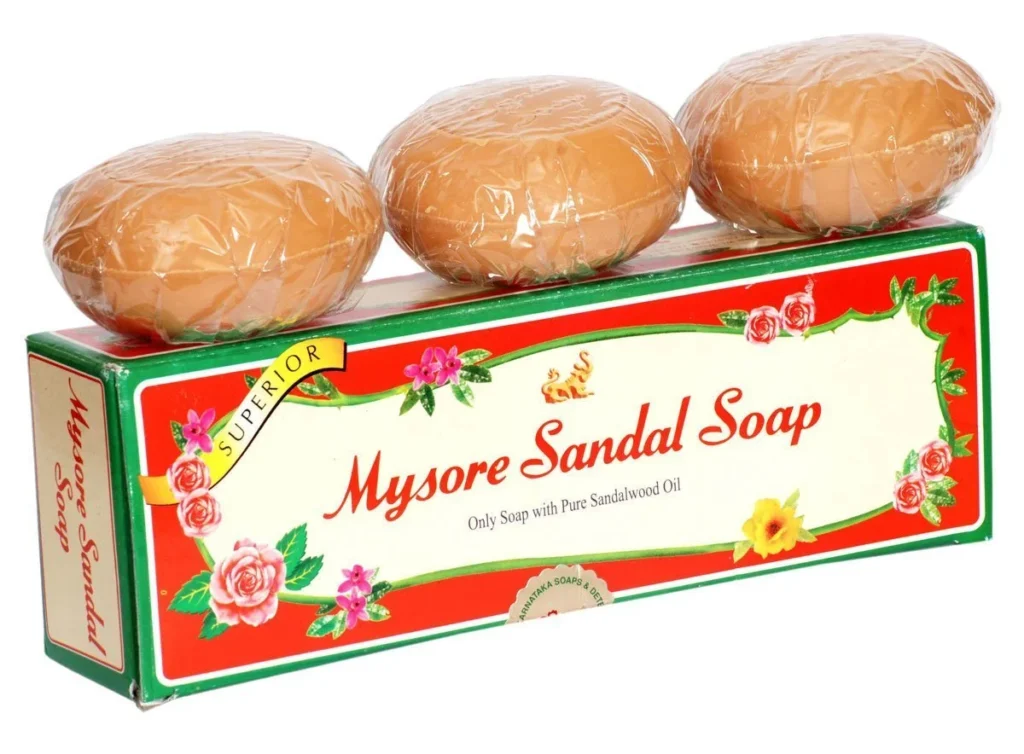When you think of World War I, what comes to mind? Soldiers in muddy trenches? Fierce battles in Europe? Probably not a fragrant bar of soap sitting in an Indian bathroom. Yet, that’s exactly what the war gave us. Out of the chaos of 1914 came something unexpected: Mysore Sandal Soap, India’s very first homegrown soap brand. Strange connection, isn’t it?

India’s Sandalwood Was Already Famous
Let’s rewind to the early 1900s. Mysore, a princely state in southern India, was known worldwide for its sandalwood trees. The heartwood of these trees produced a precious oil used in perfumes, cosmetics, and medicines. European perfume houses, especially in Germany, couldn’t get enough of it.
But here’s the irony: while Mysore supplied the world with sandalwood, Indians themselves were buying imported soaps like Pears and Lux. The raw material was ours, but the finished products were foreign. Doesn’t that sound familiar even today?
Then Came the War That Changed Everything
In 1914, the First World War broke out. Trade routes collapsed, and Germany, Mysore’s biggest customer, was suddenly cut off. For the first time, sandalwood logs piled up in warehouses with nowhere to go.
Now, this could have spelled disaster. But Maharaja Nalwadi Krishnaraja Wodeyar IV, along with his visionary Diwan Sir M. Visvesvaraya, looked at the problem differently. Instead of wringing their hands over lost exports, they asked a bold question: Why not make our own products right here in Mysore?
That question was revolutionary for its time.
A Factory Full of Fragrance
In 1916, Mysore set up the Government Sandalwood Oil Factory in Bangalore. It was the first time sandalwood oil was being distilled in India at such a large scale. Imagine the pride of watching something usually shipped abroad now bottled in your own land.
But the Maharaja wasn’t one to stop halfway. Extracting oil was good, but why not go further? Why not create something every Indian could use, something that would sit proudly next to foreign brands in bathrooms across the country?
1918: The Birth of India’s First Soap
And so, in 1918, the first bar of Mysore Sandal Soap was born. Crafted with pure sandalwood oil, wrapped in green-and-gold packaging, and stamped with the royal emblem, it was more than just soap.
It was a quiet declaration of swadeshi pride. While the freedom struggle urged people to boycott foreign goods, Mysore was showing that Indians could make luxury products themselves. Can you imagine the thrill of holding a bar of soap that wasn’t imported but made right here at home?
Why People Fell in Love With It
What made Mysore Sandal Soap so special? Two things stood out:
- The formula: To this day, it remains the only soap in the world made entirely from pure sandalwood oil.
- The connection: Sandalwood wasn’t just fragrant. In India, it carried spiritual and cultural value, from temple rituals to Ayurvedic healing. Using the soap felt personal, even sacred.
No wonder it became a household favorite and an instant classic.
More Than Soap, It Was a Statement
Looking back, Mysore Sandal Soap tells us something bigger than just the story of a product. It showed that with vision and courage, Indians could build industries on their own terms.
Remember, this was still colonial India. Most luxury goods were controlled by foreign companies. Yet here was a princely state saying, We can do it ourselves. Doesn’t that sound like the earliest version of “Make in India”?

Still Going Strong a Century Later
More than 100 years have passed, but Mysore Sandal Soap is still with us. Today, it is produced by Karnataka Soaps and Detergents Limited (KSDL), the successor of the original factory.
It has faced competition from multinational giants, yet it continues to hold its ground. In fact, in 2006, it received a Geographical Indication (GI) tag, officially linking it to Karnataka’s heritage. One whiff of that distinct fragrance and generations of Indians are instantly reminded of childhood bathrooms and family traditions.
Also Read: Forgotten Languages of India: The Fight for Recognition
When a War Gave India Soap
History has a funny way of surprising us. Who would have thought that a world war, fought far away in Europe, would one day give India its first indigenous soap?
Yet that’s exactly what happened. Out of blocked trade routes and wartime shortages came an idea that changed Indian industry forever. Mysore Sandal Soap is more than a toiletry; it’s a reminder that sometimes, even in the middle of global turmoil, innovation can bloom.
And maybe the next time you unwrap a bar of it, you’ll pause for a second and smile at the thought: This fragrance carries the story of a world war.
FAQs
Q1. When was Mysore Sandal Soap first made?
It was manufactured in 1918 under the direction of Maharaja Krishnaraja Wodeyar IV.
Q2. Why is Mysore Sandal Soap unique?
It is the only soap in the world made entirely from natural sandalwood oil.
Q3. Who created the soap?
The idea was championed by Maharaja Krishnaraja Wodeyar IV and his Diwan, Sir M. Visvesvaraya.
Q4. How did World War I influence its creation?
The war blocked sandalwood exports to Germany, forcing Mysore to use its resources locally, which led to the birth of the soap.


